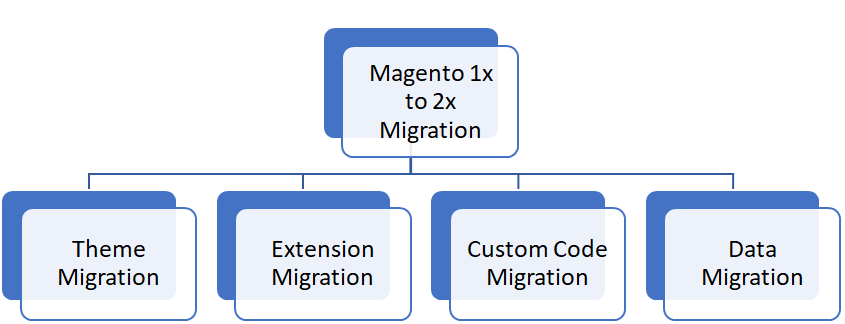Moving to Magento Open Source
- Home
- Moving to Magento Open Source
Moving to Magento Open Source: Transitioning from Magento 1
The Magento Team officially ended its support for Magento 1x in June 2020. Still, a staggering number of eCommerce portals are running on Magento 1x. As per an estimate, as of June 2021,there were more than 250,000 running on Magento, out of which only 11,000 were running on Magento 2x. [i]Often many eCommerce organizationsare seen carrying on with their older Magento setup because they have remained on the platform for years and have grown into big stores with a lot of data accumulated over the years. This makes it difficult to migrate to Magento 2x as both Magento 1x and 2x have very little in common. This means rebuilding the store from scratch in Magento 2x with other accompanying challenges such as data migration, and plugin compatibility. Most of the code will need to be rewritten. The humongous effort that is involved in this migration process has led many stores to procrastinate the transition or explore other easier alternatives.
Although online stores can function and run well on Magento 1x, this exposes these stores to security risks and unpatched technical glitches that may occur in the future and may be exploited by parties with malicious intent. Additionally, the new Magento 2x paradigmwill continue adapting and evolvingitself as per the latest web standards and practices. The migration becomes more vital because the UI/UX of a store needs continuous changes to engage more users from time to time. However, many stores are still stuck in a limbo and confusion over the decision, therefore, the following questions are worth contemplating in such a situation:
- Does the store website need any feature enhancements that are present in Magento 2x?
- Does the migration to Magento 2x a definite organizational goal at some point in time if not now?
- What is the frequency of store redesign?
- Are you satisfied with your online store’s SEO performance?
- Is payment data security a priority for your store?
If any of the above questions amount to a ‘yes’ from an organizational/enterprise perspective, it is worth migrating to Magento 2x. To make this migration process easier there are several step-by-step guides available on the internet, but there is no “one size fits all” approach. One way of going about this is to follow the official migration guide available at devdocs.magento.com. With the help of this official migration guide, we have prepared the following high-level view that serves as a framework for Magento 1x to Magento 2x for stores of varying sizes:

As the official migration guide focuses largely on the data migration via the data migration tool and beautifully describes how to transfer settings, data, and any incremental changes, we won’t be getting into it and focusing more on the remaining three aspects
Theme Migration è As the Magento 1x themes are not directly compatible with Magento 2x, developers need to redesign a theme from scratch or edit the code and structure of an existing 1x themeor customize a 2x theme. Alternatively, new compatible themes can be purchased from the Magento marketplace. It is also advised to check if the new Magento 2x store would require an extension as
Extension Migration èDevelopers need to check/verify from the respective extension developers if the Magento 1x extensions have a corresponding Magento 2x release or not. If not then developers can look for other functionally relevant extensions from the marketplace.
Custom Code Migration èThis is a tricky one. The migration guide does mention a code migration tool for custom code written in Magento 1x, however, the GitHub link for the same in the official migration plan at the time of composing this article is broken. Therefore, it is recommended to use a hit-and-trial approach here as most of the custom Magento 1 code should be compatible with Magento 2.
For data migration as mentioned before, please check out the migration guide at devdocs.magento.com. From a high-level perspective, the process is as follows:


Leave a Comment